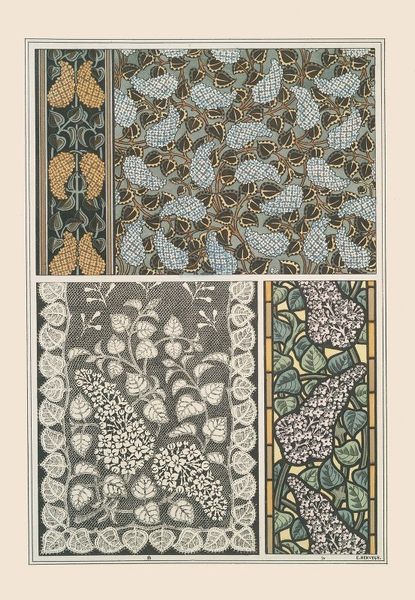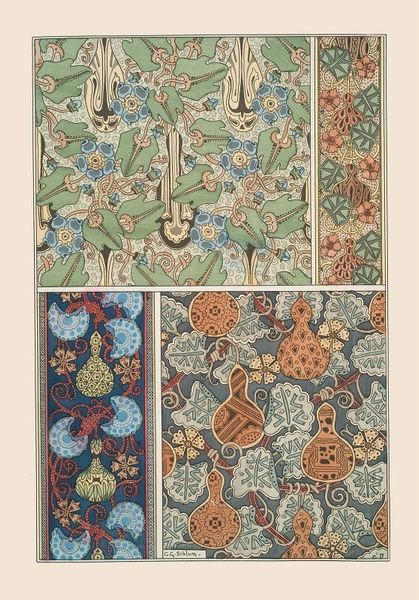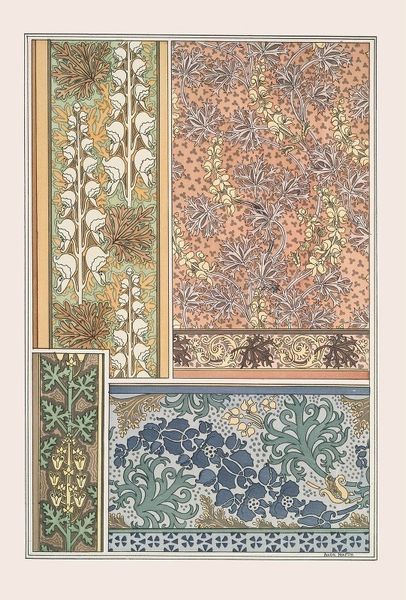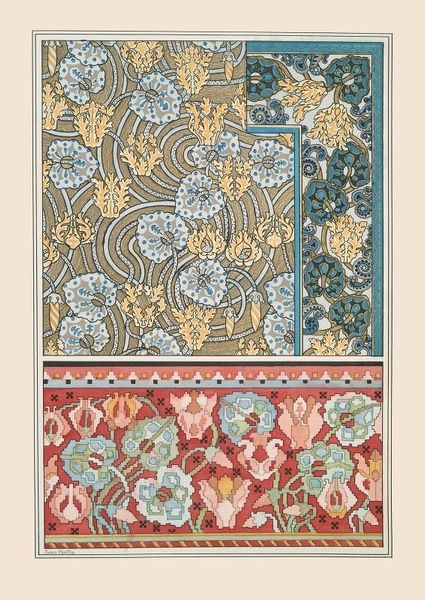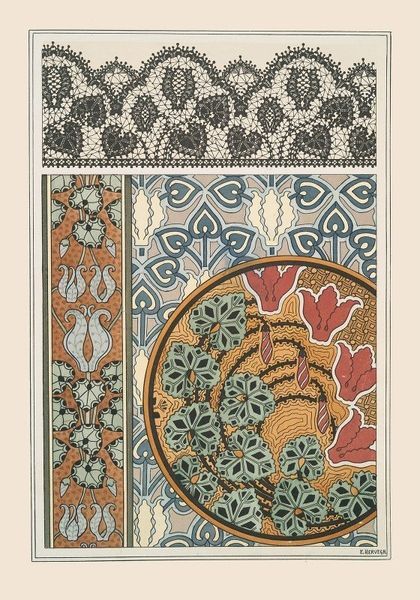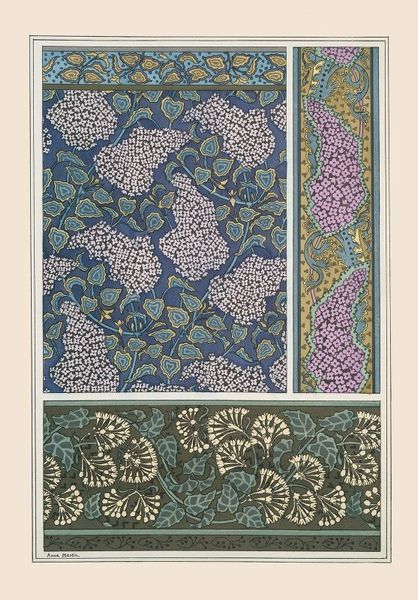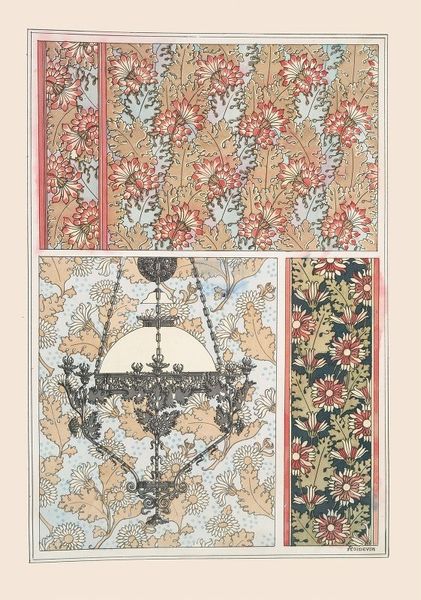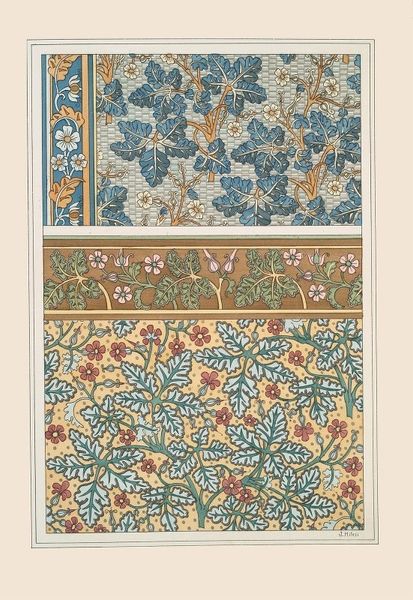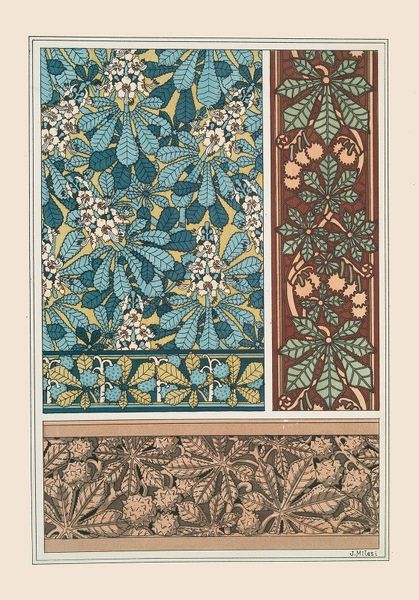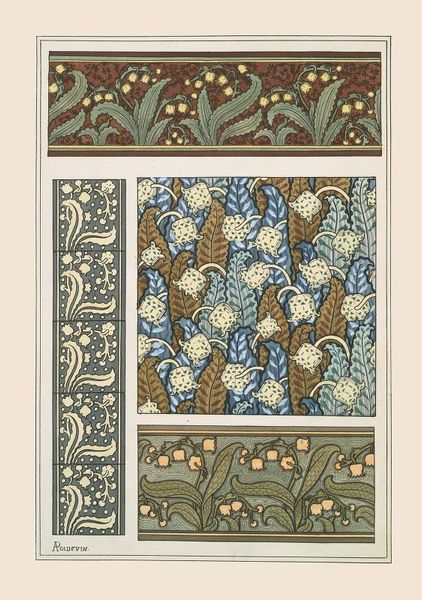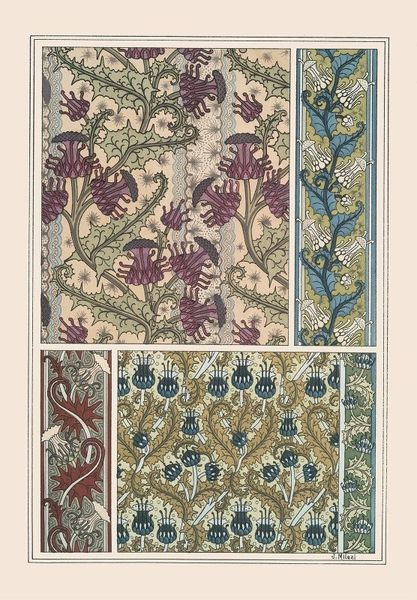
graphic-art, print
#
graphic-art
#
art-nouveau
# print
#
pattern design
#
fabric design
#
decorative-art
Copyright: Public Domain: Artvee
Curator: Let’s turn our attention to "Pissenlit 3", a print by Maurice Pillard Verneuil dating back to 1896. The work showcases several Art Nouveau patterns in a single composition. What are your initial impressions? Editor: My eye is drawn to the visual layering, these contrasting palettes—from the earthy reds to cool blues—give the piece an unexpectedly dynamic feel. There’s also a distinct asymmetry, preventing it from becoming purely decorative, almost unsettling the design in a way I enjoy. Curator: I agree. And it’s important to place this work within the context of the late 19th century and the rise of Art Nouveau. Verneuil, along with other artists of the time, were pushing against industrial production, seeking to bring beauty and nature back into everyday life. He designed many repeating and alternating textile patterns using stylized, natural forms. Editor: Which speaks to this wider movement against standardization of visual styles! Verneuil challenges the rigid constraints on design, and pushes to democratize art through decorative, mass-producible designs for everyone. You see this with textile design in general: creating accessible works is not antithetical to complex artistic or political thought. Curator: Exactly! His works served as accessible guides for others, with design after design being offered to wallpaper and textile factories alike. Now the social implications for women, especially lower class, of this mass production shouldn't be glossed over... but on it’s face, the patterns offer more aesthetic beauty. There’s a clear emphasis on flattened perspective and curvilinear forms here, characteristic of Art Nouveau's move away from academic traditions. Editor: It almost serves as a kind of radical statement then! Challenging artistic hierarchies that privilege painting, perhaps reflecting shifting social norms during an era of intense change for working class peoples' lives. To me, it brings up how even ostensibly 'decorative' art like this design for print can become intertwined with discourses of access, taste, and class struggle. Curator: Absolutely, and it's precisely those kinds of tensions and dialogues that make this artwork so rich for analysis. Thank you, this conversation opened so many historical insights for me. Editor: Thanks to you as well, your explanation framed its cultural moment with detail I never would have picked up on!
Comments
No comments
Be the first to comment and join the conversation on the ultimate creative platform.
